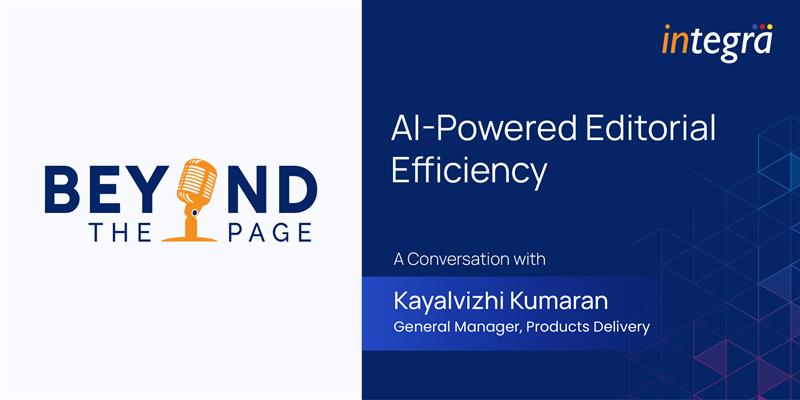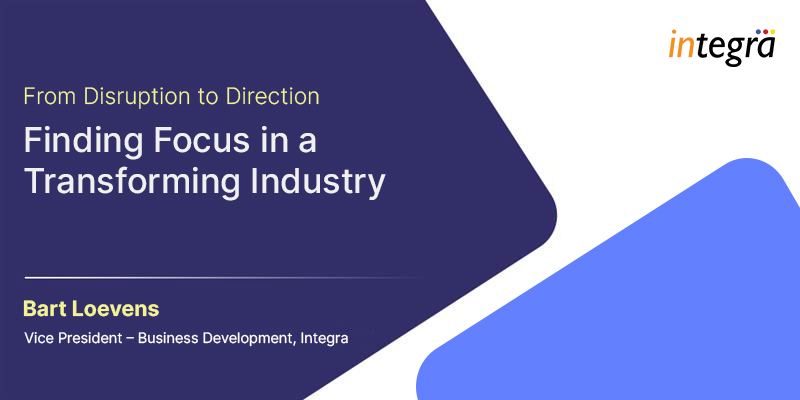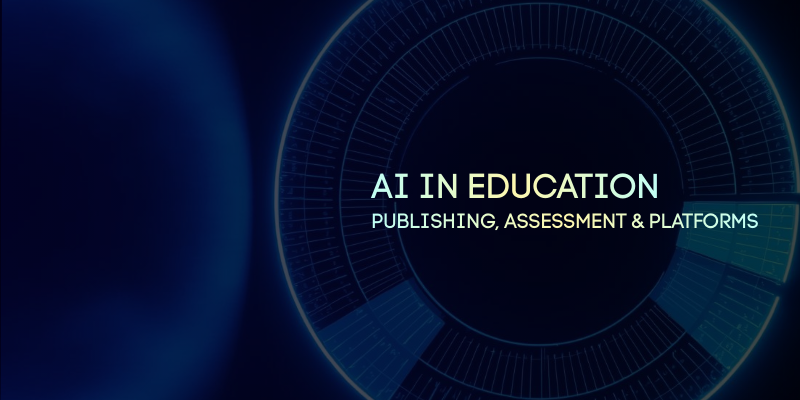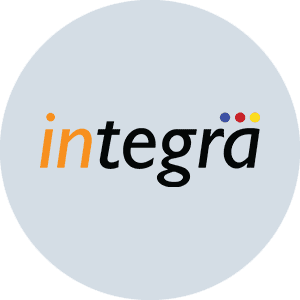
Beyond the Page – Thought Leadership, Insights, and Stories from the Heart of Integra
Welcome to Beyond the Page, where we go beyond publishing to bring you thought leadership, insights, and stories from the heart of Integra. Each episode features Integra’s leaders and experts as they share their vision, strategies, and experiences in shaping the future of the industry. Join us for an exclusive look at the minds driving innovation and transformation within our organization.
Introduction
The scholarly publishing industry is grappling with unprecedented submission volumes and increasing research integrity challenges, making it difficult for editorial teams to scale efficiently while maintaining quality.
To address this, Integra developed AuthorPilot, an AI-enabled manuscript scanner designed to help publishers enhance quality, safeguard research integrity, and reduce editorial workload.
To explore how AuthorPilot is transforming editorial workflows, we sat down with Kayalvizhi Kumaran, General Manager, Product Delivery at Integra. She shares insights into her role, the evolving industry landscape, and why she’s excited about AuthorPilot and its newly launched microsite.
Your Role and Journey
Kayalvizhi, can you tell us about your role at Integra and your journey in product delivery?
Kalayvizhi: At Integra, I currently head a team that develops AI-based products that cater to upstream and downstream editorial and content development services. While these services have always made use of some kind of technology, the rise of GenAI in the past few years has drastically changed how they are performed. AI is also continuously altering the scope of these services. We are enabling the editorial teams to not only adapt to these changes but also harness the power of technology, both AI and otherwise.
What drives your passion for developing AI-driven solutions for scholarly publishing?
Kalayvizhi: Having more than a decade of experience in editorial services, I’m able to see firsthand what AI can bring to the table. We are able to use it to do all the mechanical heavy lifting, freeing up precious time that editorial staff can spend in areas where their expertise is required. As an editorial person with a technology background, and vice versa, being able to visualize the various way in which AI can be used to enhance quality, productivity, and cost efficiency makes it a very interesting space to be in currently.
The Origin and Differentiation of AuthorPilot
Integra has been working on AI-enabled tools for a while. How did some of these products, including AuthorPilot, originate?
Kalayvizhi: AI-based products have been a part of Integra’s services for the past 7 years. We have developed our custom AI model for specific use cases. The products were originally developed, under Integra’s AI CoE, for use by the internal teams. While we added more and more features and made the products flexible and customizable, we realized that there was a need for such products outside Integra as well.
What makes AuthorPilot stand out from other tools in the market?
Kalayvizhi: Some of the distinguishing factors are the accuracy of the assessment results, customizability at various levels, and the inclusion of checks that are highly relevant and appropriate.
Enhancing Editorial Efficiency with EditorialPilot
AuthorPilot is positioned as “the AI-enabled scanner editorial teams need to manage scale.” How does it help publishers handle growing submission volumes?
Kalayvizhi: Assessing the manuscripts at submission involves checking compliance with various technical, language and research integrity requirements. Careful vetting is needed to avoid issues later in the publishing process. Performing all these checks is also time consuming. With growing submission volumes, using AuthorPilot will help the editorial teams to lower author waiting times, while ensuring that assessment is performed with the required accuracy.
What are some of AuthorPilot’s key features that make it a valuable tool for journals?
Kalayvizhi:
Comprehensive checks: Checks that assess compliance with more than 40 technical aspects related to references, figures and tables, disclosures, title page, content length, etc.; assessment of language quality against various parameters; and research integrity checks
Customizability: AuthorPilot is customizable at various levels. Publishers can pick and choose the checks they want to perform at different stages of the manuscript submission process. Journal-level configurability ensures that only the checks that are relevant to the journal are performed. The thresholds and criteria for each of the checks can also be configured based on journal requirement.
Leveraging third-party services: Third-party expertise is made use of wherever it adds value – detecting image manipulation, AI-generated text, papermill etc. are some areas. AuthorPilot saves time by providing several in-depth checks in one place.
UI and API integration: AuthorPilot can be used through either a user interface (UI) or API integration to submission systems. The UI has batch-processing capability, while the API integration can be done to suit publisher needs.
One of AuthorPilot’s standout capabilities is automated, non-intrusive language editing that preserves the author’s voice. Can you explain how this works and why it’s beneficial?
Kalayvizhi: AuthorPilot’s context-aware language editing feature enhances the content by providing suggestions to fix grammatical, stylistic, and readability issues, all the while retaining author’s tone and intent. Along with the technical and language assessment reports, the users will also receive an edited file where all these suggestions are shown in track changes.
Supporting Research Integrity
Research integrity is a critical concern. How does AuthorPilot screen for misconduct markers to help publishers uphold ethical standards?
Kalayvizhi: The primary research integrity checks are related to plagiarism, image manipulation, validation of disclosure statements, fair use of copyright material, author validity, and AI-generated text. In addition to these, any other specific research integrity checks required by the publishers can also be provided.
Flexibility
AuthorPilot can be deployed at different stages of the manuscript workflow. Can you walk us through its use at these stages?
Kalayvizhi:
- Pre-submission – Helps authors self-screen before submission
- Submission and pre-peer review – Assists editorial teams in screening and refining manuscripts
- Post-acceptance – Serves as a final quality check before production
Publishers can decide which checks they want to be performed at each of these stages, and AuthorPilot can be configured accordingly.
Future of AuthorPilot
Integra has emphasised continuous improvements in AuthorPilot. What new features or integrations can publishers look forward to?
Kalayvizhi: We are continuously adding new checks in response to customer requests. These checks could either be in-house developed or provided through third-party integration. Many of these are research integrity oriented and are being added for specific journals, for example, checks related to human and animal ethics. Some newer, exciting features that will soon be available are related to submission package processing (rather than individual files) and an enhanced analytical dashboard that will provide key insights to the editorial desk.
Conclusion
Thank you, Kayalvizhi, for this deep dive into AuthorPilot and how it’s empowering editorial teams to scale efficiently, enhance manuscript quality, and uphold research integrity. AI-powered tools like AuthorPilot are reshaping how journals manage submissions, peer review, and editorial processes. With its customizability, affordability, and automation-driven efficiency, AuthorPilot is well on its way to becoming an indispensable part of modern editorial workflows.
Recent Blogs

Preprints, Transparency, and the Future of Scholarly Publishing: Why Journals Should Lead the Shift

From Disruption to Direction: Finding Focus in a Transforming Industry


